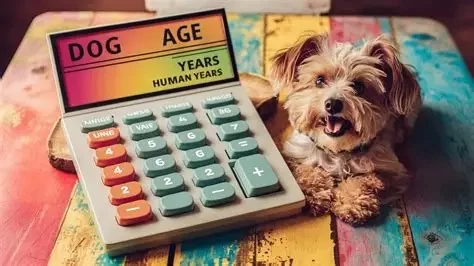- 1 - #how-accurate-are-online-dog-age-calculators-compared-to-vets-in-2025
- 2 - #what-actually-goes-into-a-dogs-age
- 3 - #how-online-dog-age-calculators-work-in-2025
- 4 - #where-calculators-tend-to-miss
- 5 - #what-veterinarians-do-differently
- 6 - #real-world-cases-from-us-pet-families
- 7 - #how-to-use-an-online-calculator-the-right-way
- 8 - #breed-and-size-specific-aging-curves
- 9 - #health-data-that-changes-the-age-picture
- 10 - #a-quick-accuracy-checklist-for-2025
- 11 - #when-to-escalate-from-calculator-to-clinic
- 12 - #faq-for-us-dog-owners-in-2025
How Accurate Are Online Dog Age Calculators Compared to Vets? in 2025
Short take: online dog age calculators in 2025 are helpful for a ballpark “human years” estimate, especially when they factor in size and breed. But they still fall short of a veterinarian’s assessment when you need a health-meaningful answer—like whether your dog is entering a senior life stage, needs preventive lab work, or should change diets. The reason: calculators mostly convert time; vets translate biology.
Why this matters in the United States
Insurance plans, vaccination schedules, senior wellness exams, and even adoption conversations in the U.S. often depend on a dog’s functional age, not just birthday math. If you’re deciding when to switch to a senior diet or pricing out wellness plans, a 2-year swing in “age” can change your choices. That’s where the gap between calculators and clinical judgment shows up.
What Actually Goes Into a Dog’s “Age”
“Age” has layers. There’s chronological age (birthdate), physiologic age (how the body is functioning), and risk age (likelihood of age-linked disease). Online tools mostly convert the first; vets evaluate the second and third with exam findings and diagnostics.
Three levels owners should know
1. Growth & maturation
Small breeds mature faster in the first year and then age more slowly; giant breeds grow explosively and may show senior changes sooner.
2. Wear & tear
Teeth, joints, heart, and kidneys each “age” on their own clocks depending on genetics, diet, exercise, and prior disease.
3. Risk exposure
Body condition score (lean vs. overweight), dental health, and endocrine balance meaningfully shift the timetable.
How Online Dog Age Calculators Work in 2025
Most 2025 calculators ask for your dog’s age in years, size (toy/small/medium/large/giant), and sometimes breed. They then apply a curve to convert “dog years” into “human years.” The better ones use non-linear models—early years count more, later years count less. A few premium tools let you toggle for spay/neuter status or weight, which nudges results but still can’t see what’s happening inside your dog.
What “good enough” looks like
For everyday conversations—“Is my 7-year-old Lab roughly middle-aged or senior?”—a modern calculator is typically accurate within a range (think: ±1–2 “human years”). That’s fine for social media or quick planning.
Where Calculators Tend to Miss
Hidden health conditions
Kidney disease, dental infection, thyroid imbalance, or early arthritis can “age” a dog years faster—none of which a calculator can see.
Outlier breeds
Flat-faced breeds (like Bulldogs), ultra-long-back breeds (like Dachshunds), and giant breeds (like Great Danes) don’t track neatly on generic curves.
Weight and body condition
Two 8-year-old Beagles can age very differently if one is lean and the other carries extra pounds. Obesity alone can shift the real-world aging picture.
What Veterinarians Do Differently
In-clinic, a veterinarian blends exam findings (eyes, teeth, heart/lungs, joints, skin), history (diet, activity, prior illnesses), and optionally screening labs (CBC, chemistry, urinalysis, thyroid). That creates a functional age: how old the body behaves, not just how old the calendar says. That’s why a vet’s “your dog is entering a senior stage” call often doesn’t match a calculator’s cheerful middle-aged label.
Why functional age matters
Functional age drives decisions—senior bloodwork schedules, dental cleanings, joint supplements, cardiac checks, and nutrition changes.
Real-World Cases from U.S. Pet Families
Case 1: The spry “senior” who wasn’t
“Mochi,” a 9-year-old miniature poodle from Austin, looked “old” in a calculator because toy breeds rack up a lot of “human years” early. A vet exam found excellent teeth, lean body condition, and normal bloodwork. Functionally, Mochi aged more like a fit adult—no diet switch yet, only joint-health monitoring.
Case 2: The 6-year-old Lab with senior needs
“Harbor,” a 6-year-old Labrador in Chicago, came up as “about 40 in human years” online. In clinic, the vet found early dental disease and a borderline thyroid level. Those findings bumped Harbor’s functional age forward—triggering a plan for dental cleaning and thyroid recheck. An online calculator couldn’t have caught it.
How to Use an Online Calculator the Right Way
Step 1: Pick a tool that asks for size and, ideally, breed
If a calculator only multiplies by seven, it’s outdated. Choose one that uses non-linear, size-aware curves.
Step 2: Treat the result as a range
Write down the “human years” result and a ±1–2 year cushion. This keeps decisions sensible and avoids overreacting to a single number.
Step 3: Reality-check with your dog’s body
Energy level, dental breath, activity tolerance, stiffness after rest, appetite, and coat quality all fine-tune the picture. Any red flags? Time for the clinic.
Step 4: Convert insight into action
Use the estimate to schedule wellness exams, plan weight goals, and consider preventive lab work—then confirm in person.
Breed and Size-Specific Aging Curves
Here’s how to think about typical U.S. household dogs in 2025, without getting lost in decimals:
Toy & small breeds (≤20 lb adult)
Fast early maturity; then a slower, steadier climb. Many don’t look “senior” until 10–12 if they’re lean and cared for.
Medium breeds (21–50 lb)
A balanced curve. Expect middle-age changes around 7–8, with earlier checks for dental and joint health if they’re super active.
Large breeds (51–90 lb)
Earlier senior transitions—joint support and weight vigilance make a big difference starting around 6–7.
Giant breeds (≥91 lb)
Shorter average lifespans, so senior care often begins around 5–6. Calculators are least reliable here; veterinary guidance is essential.
Health Data That Changes the Age Picture
Weight & body condition
Leaner dogs live longer on average; maintaining a visible waistline is a simple, high-impact habit.
Dental status
Untreated dental disease adds systemic inflammation—think “aging accelerator.” If your calculator says “middle-aged” but the breath says otherwise, believe the breath and book a cleaning.
Endocrine and organ screening
Thyroid, kidney, and liver values can age a dog faster or slower in practical terms. These aren’t visible to algorithms.
A Quick Accuracy Checklist for 2025
Use this 60-second workflow
1. Choose a size-aware calculator
Reject “×7” tools. Size and breed matter.
2. Add context from your dog’s day
Note mobility after long naps, play stamina, and eating behavior over a week.
3. Cross-check teeth and weight
Bad breath or creeping weight gain? Your dog’s functional age might be higher than the calculator says.
4. Calendar a vet visit twice a year for seniors
For dogs entering senior years (as advised by your vet), semiannual wellness checks keep surprises small.
When to Escalate from Calculator to Clinic
Situations where a vet beats any algorithm
1. You don’t know the birthdate
Rescues and strays need dental checks, musculoskeletal assessment, and sometimes labs to age accurately.
2. You’re planning anesthesia or a big diet switch
Age ties into anesthesia risk and nutritional needs—no online tool can clear those decisions.
3. You’ve noticed a behavior or stamina change
New anxiety, reluctance to jump, extra thirst, or panting at rest all demand in-person evaluation.
FAQ for U.S. Dog Owners in 2025
1. Are online dog age calculators accurate enough for medical decisions?
They’re fine for rough planning, not for medical calls. Treat results as conversation starters for your veterinarian.
2. Do breed-specific calculators really help?
Yes—if they’re based on modern, non-linear curves and your dog matches the breed standard. Mixed-breed dogs do well with size-based models plus a vet check.
3. Can I improve a calculator’s accuracy?
Keep your dog lean, maintain dental care, and schedule regular wellness exams; when the body is healthier, the “age” you care about stays younger.
How Hidden Brook Veterinary Helps
If you’re using an online calculator and want help turning that estimate into a care plan, our team at Hidden Brook Veterinary can translate the number into nutrition, dental, and screening recommendations tailored to your dog’s size, breed, and lifestyle. Whether you need senior-friendly diets, joint support, or a personalized wellness schedule, we’ll fit the plan to your dog—not just to a curve.












